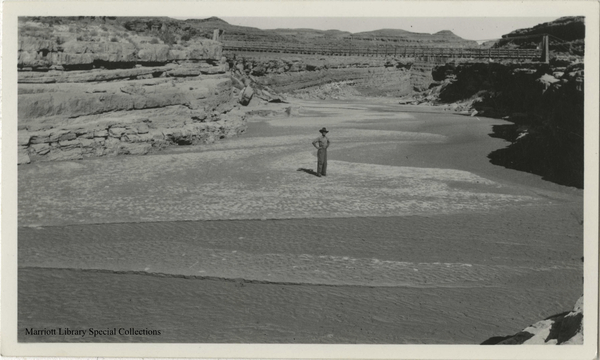Dublin Core
Title
Description
In 1934, a historic drought ravaged the United States at the height of the Great Depression. Utah was hit especially hard, leaving its agricultural economy in peril. As natural resources ran thin, Utah officials appealed to the federal government for help. With good planning and cooperation, Utah made the most of the aid and narrowly weathered the crisis.
Utah hadn’t seen such little rain since 1856, with precipitation only half of the yearly average. Governor Henry Blood sprang into action. Knowing that the state would face losses, Governor Blood hoped that coordinated action between state, federal, and local governments would mitigate the worst of it.
Before coming up with a plan, the government needed to see what shape Utah’s fields were in. The governor created new appointments, including a state water conservator, to make an assessment of the problems that the drought posed. The conservator found that groundwater and reservoirs were drying up too rapidly to last throughout the season. Farmers would need to prioritize watering their higher-value perennial crops, such as orchards, and to let other plants die to preserve water. This put livestock herds at risk of starvation, since farmers would barely be able to store enough alfalfa to make it through the winter. One historian, Leonard Arrington, even wrote that quote “even the grasshoppers were starving.”
Governor Blood appealed to President Franklin Roosevelt, who promptly responded with one million dollars. With that money, Utah administrators quickly funded hundreds of water conservation projects. Workers lined ditches, developed springs, sunk new wells, and inspected pipes for leaks. The US Department of Agriculture bought livestock that were in danger of starving and distributed the meat to the unemployed. Utah officials also lobbied for long-term solutions to drought problems, leading to the construction of Deer Creek and Pine View dams.
With federal assistance, Utah weathered the worst of the disaster until November when a few drops of rain finally fell. Utah officials earned high praise from the federal government for their swift and efficient actions, as well as their cooperative spirit.
Creator
Source
_______________
See Leonard J. Arrington, “Utah’s Great Drought of 1934,” Utah Historical Quarterly 54, no. 3 (1986).

